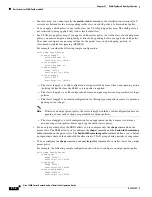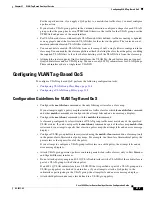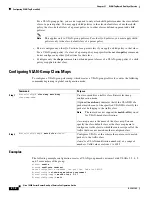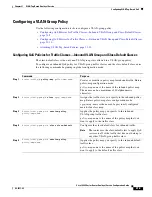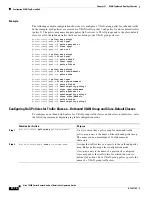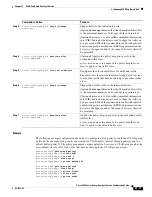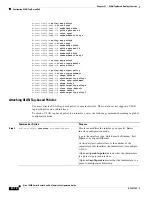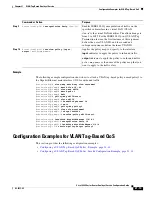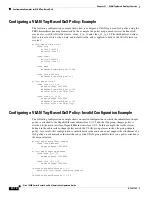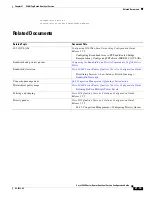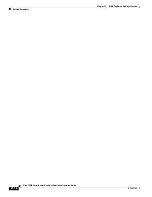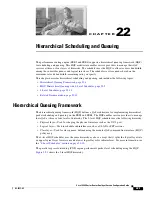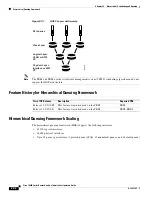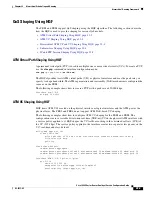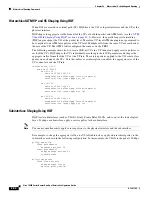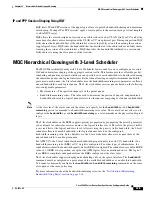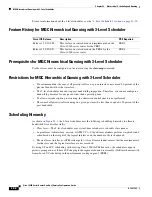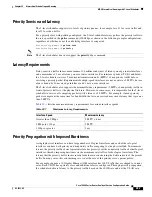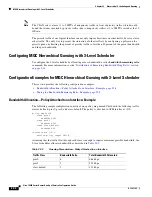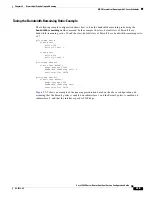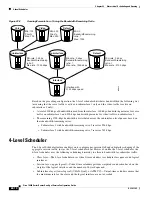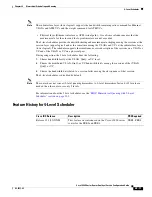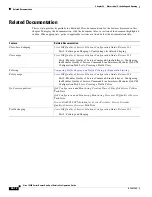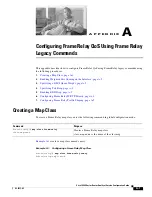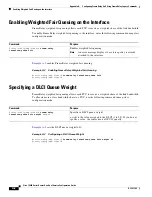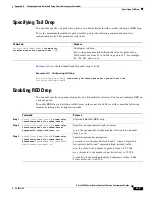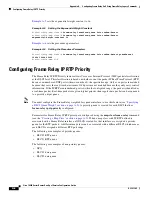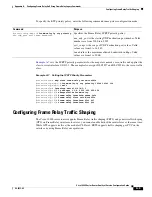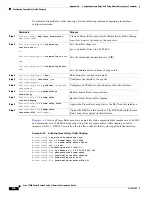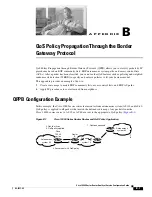
22-4
Cisco 10000 Series Router Quality of Service Configuration Guide
OL-7433-09
Chapter 22 Hierarchical Scheduling and Queuing
Hierarchical Queuing Framework
Hierarchical ATM VP and VC Shaping Using HQF
When VCs are created in a virtual path (VP), HQF treats the VCs as logical interfaces and the VP as the
physical interface.
HQF shapes the aggregate traffic from all of the VCs at both the packet and ATM levels (see the
“ATM
Virtual Path Shaping Using HQF” section on page 22-3
). However, the parallel express forwarding
(PXF) engine shapes the VCs at the packet level. Therefore, VC-level ATM shaping is not guaranteed to
be compliant to an ATM layer policer at the VC level. Multiple cells from the same VC are sent back at
the rate of the VP. The ATM SAR is configured the same as on the PRE2.
The following example shows how to create VBR-nrt VCs in a VP tunnel and apply service policies to
each of the VCs. HQF shapes the VCs individually according to their SCR parameter and shapes the
aggregate traffic from all of the VCs at the VP rate. The service policies applied to the VCs create class
queues on each one of the VCs. Note that unless oversubscription is enabled, the aggregate rates of the
VCs cannot exceed the VP rate.
interface atm 7/0/0
atm pvp 25 50000
pvc 25/100
vbr-nrt 10000 5000 16
encapsulation aal5autoppp Virtual-Template1
service-policy output pppoe_vc_out
pvc 25/101
vbr-nrt 10000 7000 16
encapsulation aal5autoppp Virtual-Template1
service-policy output pppoe_vc_out
pvc 25/110
vbr-nrt 10000 2000 16
encapsulation aal5autoppp Virtual-Template1
service-policy output pppoe_vc_out
Subinterface Shaping Using HQF
HQF treats subinterfaces (such as VLANs, QinQ, Frame Relay DLCIs, and so on) at the lower logical
layer. To shape a subinterface, apply a service policy to the subinterface.
Note
You cannot simultaneously apply service policies to the physical interface and the subinterface.
For example, to shape the aggregate traffic on a VLAN subinterface, apply a hierarchical policy to the
subinterface as shown in the following configuration. In this example, the VLAN is shaped at 100 kbps.
policy-map child
class precedence0
bandwidth percent 10
class precedence1
shape average percent 50
random-detect
policy-map parent
class class-default
shape average 100000
service-policy child

